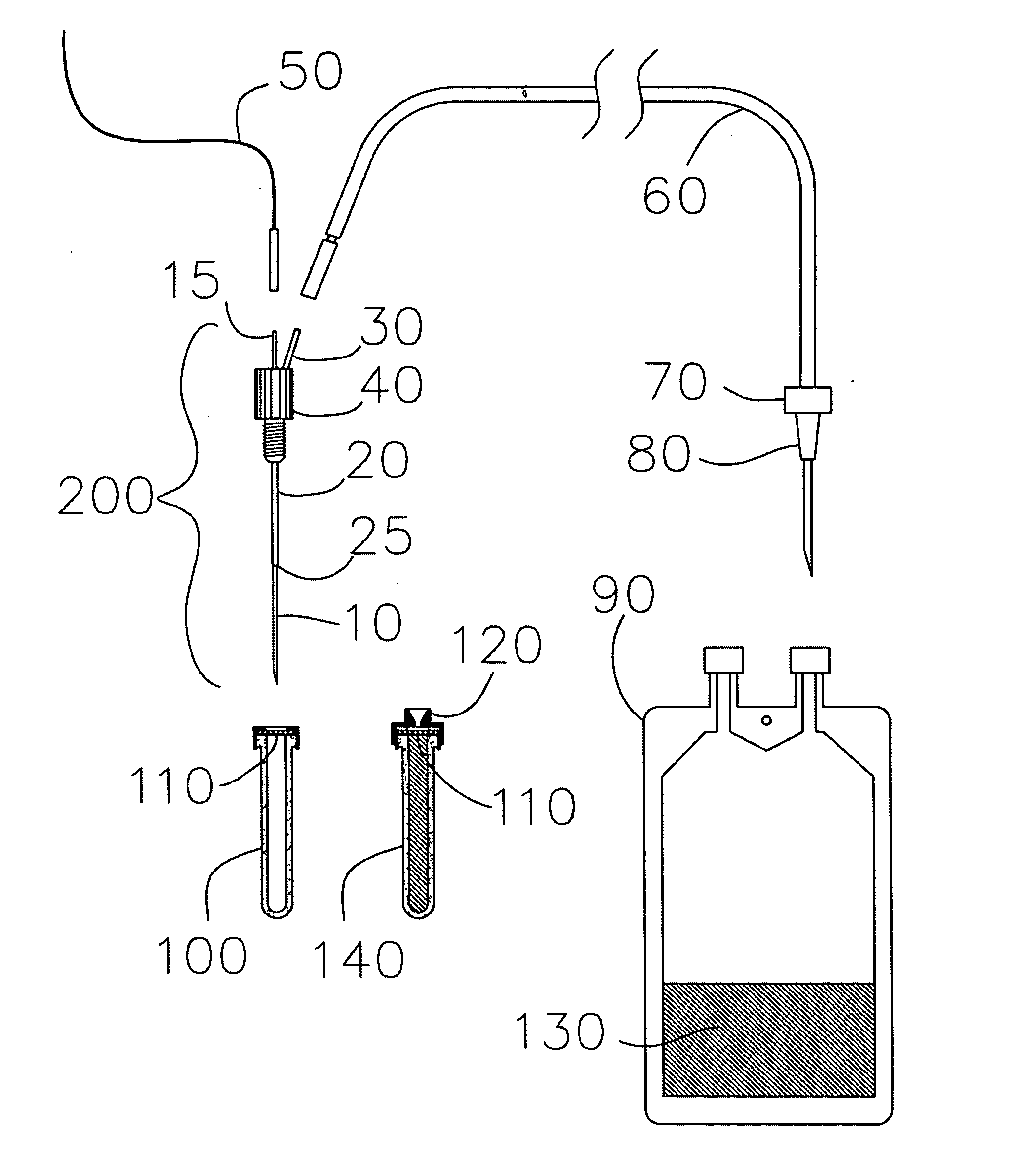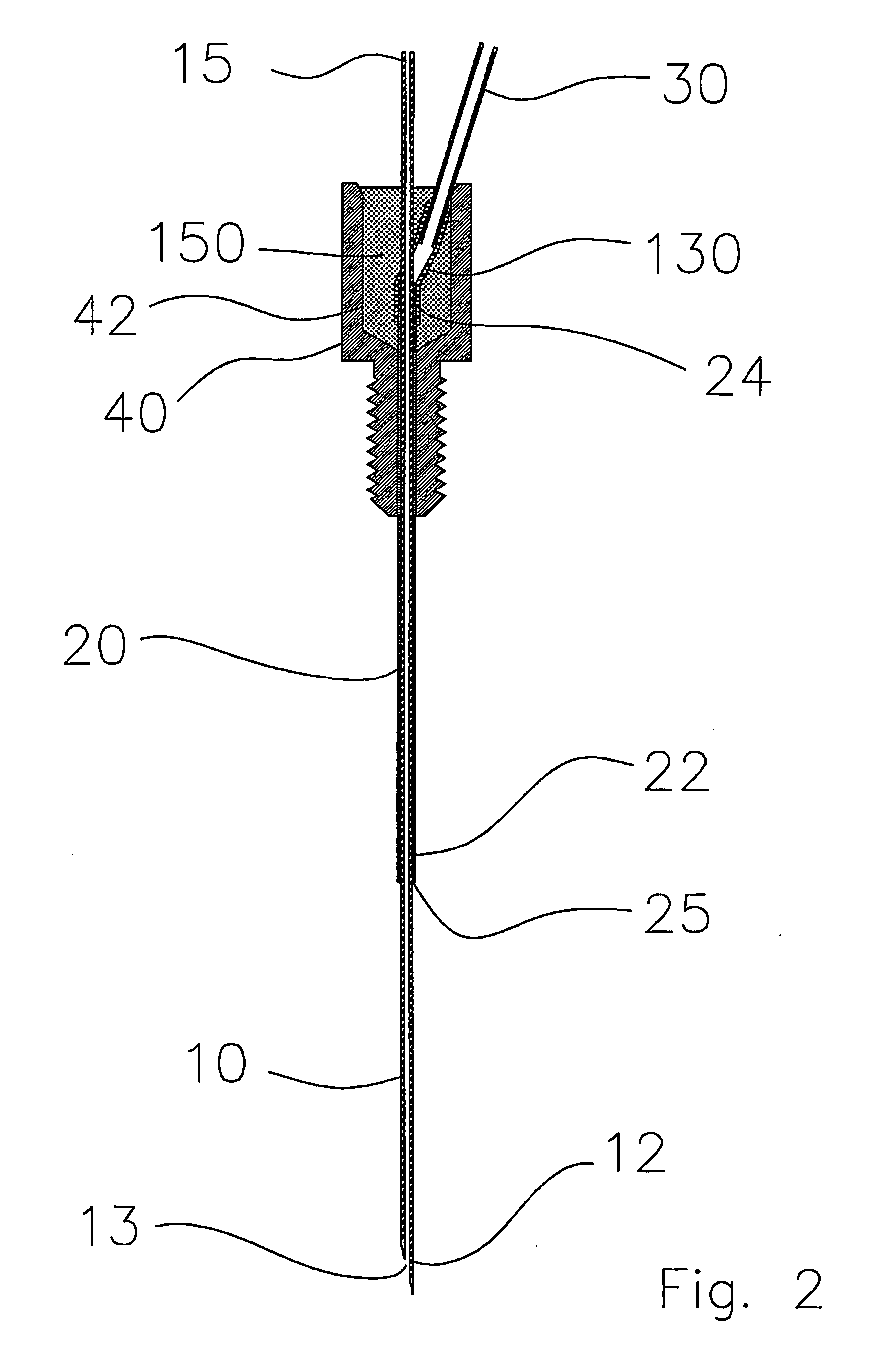System and method for sample collection
a biological fluid and system technology, applied in the field of biological fluid supply system, can solve the problems of difficult to achieve, labor-intensive, time-consuming, hazardous biological fluid storage, etc., and achieve the effects of improving the environmental and control conditions for sample collection, improving the safety of the environment, and easy integration
- Summary
- Abstract
- Description
- Claims
- Application Information
AI Technical Summary
Benefits of technology
Problems solved by technology
Method used
Image
Examples
Embodiment Construction
[0051] Generally, the present invention provides a tubing assembly, system, and method for biological fluid waste containment for sample collection. Referring now to FIG. 1, there is shown a diagrammatic view of one embodiment of the system of the present invention. Specifically, FIG. 1 shows one embodiment of tube assembly 200 that can be used manually or with an automated sample collection system, as is explained in greater detail herein. Tube assembly 200 of FIG. 1 dispenses biological fluid samples into sealed collection vial 100. In addition to collection vial 100, tube assembly 200 can be inserted into rinse vial 140. In this embodiment, each of vials 100 and 140 comprise septum 110 that seals the vial. Rinse vial 140 also comprises guide cap 120.
[0052] In the embodiment of FIG. 1, tube assembly 200 includes rigid cannula 20 placed over the outside of needle 10 so that there is clearance between the interior of the cannula 20 and the outside of the needle 10, as is explained ...
PUM
 Login to View More
Login to View More Abstract
Description
Claims
Application Information
 Login to View More
Login to View More - R&D
- Intellectual Property
- Life Sciences
- Materials
- Tech Scout
- Unparalleled Data Quality
- Higher Quality Content
- 60% Fewer Hallucinations
Browse by: Latest US Patents, China's latest patents, Technical Efficacy Thesaurus, Application Domain, Technology Topic, Popular Technical Reports.
© 2025 PatSnap. All rights reserved.Legal|Privacy policy|Modern Slavery Act Transparency Statement|Sitemap|About US| Contact US: help@patsnap.com



